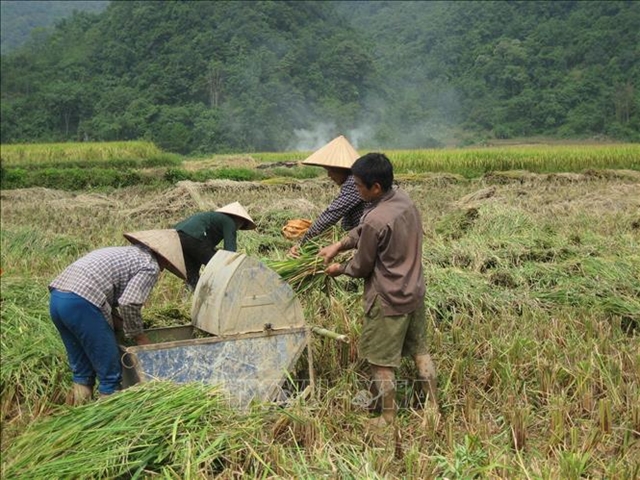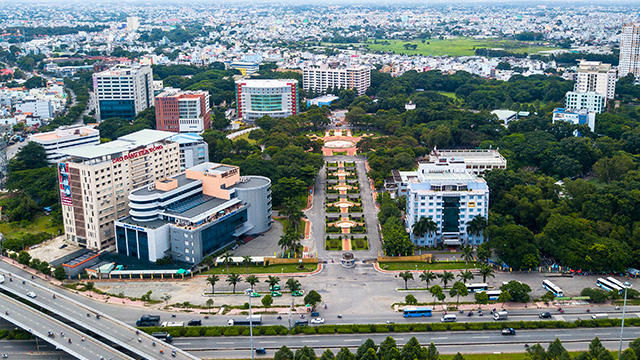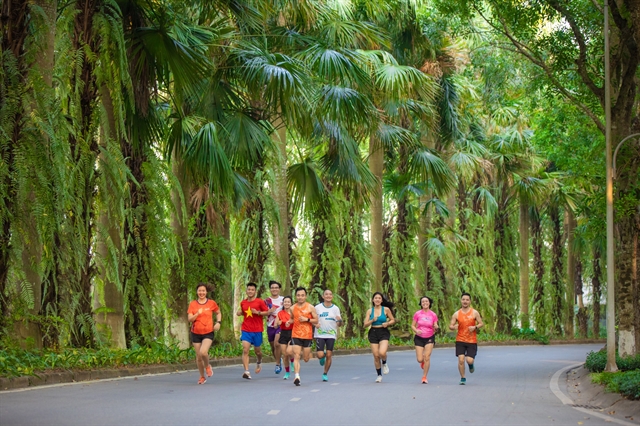 Society
Society


|
| Farmers in the northern mountainous province of Cao Bằng work on a rice field. Cao Bằng, together with Hà Giang, Bắc Kạn, Sơn La and Điện Biên, are five of the six provinces located in the northern mountainous region with under-20 per cent rate of communes meeting all the criteria of the national target programme on new-style rural area building. — VNA/VNS Photo Chu Hiệu |
HÒA BÌNH – The northern mountainous region has recorded improvements under the national target programme on new-style rural area building, but it is still facing more difficulties and challenges than other regions.
The assessment was made at a meeting held in Hòa Bình Province on Saturday to review 10 years of implementing the programme in the region.
The national target programme, initiated by the Government in 2010, sets 19 criteria on different aspects, aiming to boost the development of rural regions of Việt Nam. The number of criteria was increased to 20 in 2015.
At the meeting, Minister of Agriculture and Rural Development Nguyễn Xuân Cường, deputy head of the central steering committee for national target programmes for 2016-20, noted the northern mountainous region comprises 14 provinces that account for 28.75 per cent of Việt Nam’s area and are home to over 30 ethnic groups.
The region is critically important to the whole country in terms of economy, society and security-defence, while holding advantages in agriculture, forestry, hydropower, mineral, tourism and border gate economy.
However, he also noted this region’s complex terrain along with its underdeveloped infrastructure and socio-economic aspects, adding that after nine years of the new-style rural area building programme, the localities are still facing more difficulties and challenges compared to other regions.
As of the end of June 2019, 603 communes, or 26.45 per cent of the total 2,280 communes in the northern mountainous region, were recognised as new-style rural areas, up 18.34 per cent from 2015 but still lower than the national average of 50.26 per cent. The local rate is likely to reach 28 per cent at this year’s end.
Each commune in the region met 12.28 criteria on average, up 8.32 criteria from 2011 and 2.9 from 2015. Meanwhile, the number of criteria satisfied by a commune in the country averaged 15.26, Cường said.
Across the region, six district-level localities have obtained the new-style rural area status, becoming a model for others in this work, he noted, commenting that this fact shows new-style countryside building efforts can gain widespread success even in disadvantaged areas, not only in several communes with more advantages.
The official also pointed out that despite improvements, there is a big gap in this work, especially in remote and border hamlets and villages, and the gap tends to become wider compared to other regions in Việt Nam.
The rate of communes meeting all the criteria is 82.74 per cent in the Red River Delta, 70 per cent in the southeastern region, 45.82 per cent in the southern central coastal region, and 42.77 per cent in the Mekong Delta. However, five of the six provinces with under-20 per cent rate are located in the northern mountainous region, namely Hà Giang, Cao Bằng, Bắc Kạn, Sơn La and Điện Biên. Up to 61.3 per cent of the communes meeting less than 10 criteria in the country are also in this region.
The central steering committee has set an aim that for 2021-25, at least one province in the region will complete building new-style rural areas, and each of the local provinces will have at least one district-level locality recognised as a new-style rural area.
Meanwhile, fundamental infrastructure like transport, electricity and water facilities, along with schools and clinics, will be upgraded and inter-connected. The living standards of local rural residents will also have to be improved with the average per capita income rising by at least 1.8-fold from 2020, according to the committee. VNS









